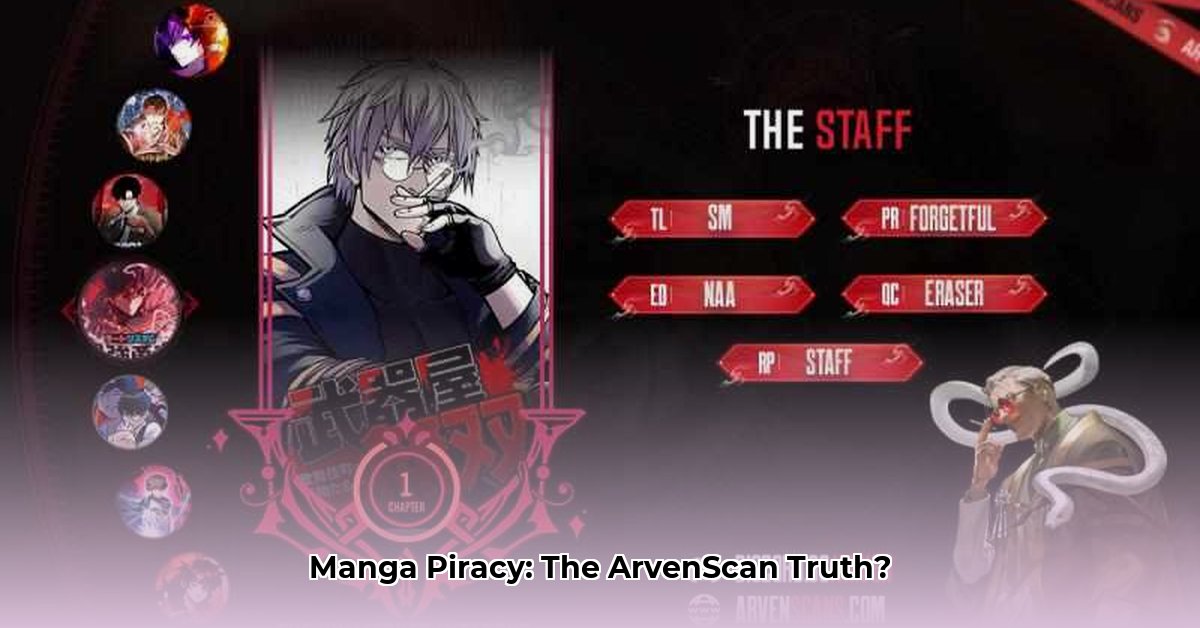
The digital age has revolutionized access to information, but it has also created fertile ground for copyright infringement. Manga piracy, costing the industry an estimated tens of millions of dollars annually, exemplifies this challenge. One significant player in this landscape is ArvenScan, a scanlation group directly involved in the creation and distribution of pirated manga. This article investigates ArvenScan's activities, the broader economics of manga piracy, and the ongoing efforts to combat this widespread issue.
Understanding ArvenScan and Ravenscans
ArvenScan and Ravenscans represent different facets of the manga piracy ecosystem. Ravenscans functions as an aggregator, a vast online index linking users to various sources of pirated manga hosted on other platforms. It is a passive player, profiting primarily from advertising revenue generated by directing significant traffic to these illicit sources. This is akin to a librarian pointing towards stolen books; though not the thief, they facilitate the act.
ArvenScan, however, is an active participant. As a scanlation group, it actively scans and uploads manga chapters, directly bypassing official release channels. While it operates on platforms like MangaDex (which itself actively combats piracy), its direct involvement in the creation and distribution of pirated content makes ArvenScan a more direct threat to the industry. This is comparable to actively stealing and selling the book directly.
The Economics of Manga Piracy
The financial incentives driving manga piracy are substantial. Ravenscans primarily relies on advertising revenue fueled by high user traffic to pirated content. ArvenScan, on the other hand, likely generates income through a combination of advertising, donations, and potentially subscriptions providing access to exclusive, pirated scans. This direct monetization makes ArvenScan a more challenging target.
The cost to the legitimate manga industry is significant. Estimates suggest millions of dollars in lost revenue annually, impacting not only large publishing houses but also individual artists, writers, and translators. Lost sales translate directly into lost income for creators, threatening their livelihoods and the overall health of the manga industry. This financial impact is a direct consequence of facilitated piracy. How much longer can the industry sustain these losses?
| Revenue Stream | Ravenscans | ArvenScan (Likely Model) |
|---|---|---|
| Advertising Revenue | High | Low to Moderate |
| Direct User Payments (Donations, Subscriptions) | Low | High |
| Scale of Operations | Extremely Large | Smaller, but more direct impact |
Legal and Ethical Considerations
Manga piracy is unequivocally illegal, violating international copyright laws. Legal ramifications extend to both the operators of sites like ArvenScan and Ravenscans, and to individuals who download and share pirated content. Penalties can include significant fines and imprisonment. Beyond the legal consequences are profound ethical considerations. The theft of intellectual property deprives creators of fair compensation and undermines their ability to continue their work. This is not only a violation of law but a violation of artistic integrity.
The Fight Against Manga Piracy
Combating manga piracy requires a multi-pronged approach. Legal action, technological solutions, and consumer education are crucial components.
1. Legal Actions: Publishers are increasingly pursuing legal action against piracy websites and individuals involved. While costly and time-consuming, legal recourse is vital in deterring piracy and recovering damages.
2. Technological Solutions: DRM (Digital Rights Management) technologies aim to restrict access to copyrighted material. However, these are constantly evolving, requiring continuous refinement to counter pirate tactics. AI-powered detection systems are showing promise, though their effectiveness relies on the ability to stay ahead of continuously adapting piracy methods.
3. Consumer Education: Educating manga fans about the importance of supporting legitimate publishers and creators is paramount. Public awareness campaigns highlighting the ethical and legal implications of piracy are needed to encourage ethically-conscious consumption.
Future Trends and Predictions
The battle against manga piracy is an ongoing arms race. As technology advances, so too will the sophistication of piracy methods. The industry must invest in proactive measures to counter these evolving tactics. This includes strengthening international copyright laws, developing more robust DRM systems, and improving collaborative efforts among publishers, law enforcement and hosting platforms to successfully remove pirated content. The future resilience of the manga industry hinges on adapting to these ever-changing challenges.
Conclusion
Manga piracy, facilitated by sites like ArvenScan and Ravenscans, poses a significant threat to the industry's financial stability and the livelihoods of countless creators. A comprehensive strategy encompassing legal action, technological innovation, and consumer education is necessary to effectively combat this widespread problem. The failure to address this issue effectively risks long-term damage, undermining the creative ecosystem and potentially silencing the voices of countless manga artists.